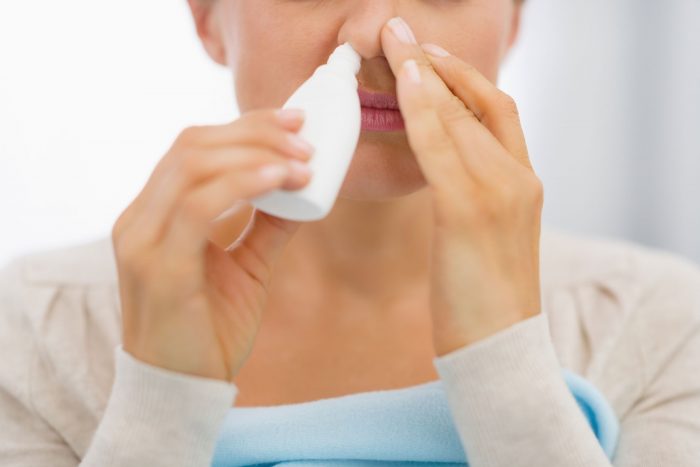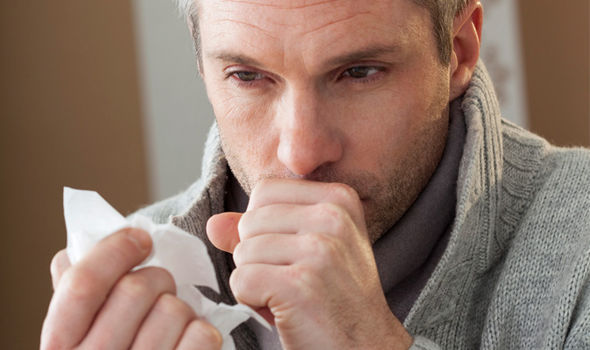According to the Centers for Disease Control (CDC), more than 50 million Americans experience an allergic reaction each year, and the best treatment will depend on the cause and severity of the reaction.
In this article, we take a close look at a range of treatments for allergic reactions, depending on a person’s symptoms and their severity, including anaphylaxis.
- Most minor allergy symptoms can be treated with antihistamines, corticosteroids, or decongestants.
- Saline nasal rinses can be used for congestion-related allergy symptoms.
- Corticosteroid creams can treat skin rashes related to allergies.
- Immunotherapy is a long-term treatment option for chronic allergy symptoms.
- Anaphylaxis is a medical emergency, and people should call 911 if they suspect someone is having an anaphylactic reaction.
What is an allergic reaction?
The immune system overreacts to these allergens and produces histamine, which is a chemical that causes allergy symptoms, such as inflammation, sneezing, and coughing.
Mild allergic reactions can usually be treated with home remedies and over-the-counter (OTC) medications.
However, chronic allergies need treatment from a medical professional. Severe allergic reactions always require emergency medical care.
Treating allergic reactions
Many mild to moderate allergic reactions can be treated at home or with OTC medications. The following treatments are commonly used to reduce the symptoms of an allergic reaction:
Antihistamines
Antihistamines can help to treat most minor allergic reactions regardless of the cause. These drugs reduce the body’s production of histamine, which reduces all symptoms, including sneezing, watering eyes, and skin reactions.
Second-generation antihistamines, including Claritin (loratadine) and Zyrtec (cetirizine), are less likely to cause drowsiness than first-generation antihistamines, such as Benadryl.
Antihistamines come in several forms, usually to help deliver the medication closer to the source of the reaction or make it easier to consume, such as:
- oral pills
- dissolvable tablets
- nasal sprays
- liquids
- eye drops
Antihistamines in these forms are available from pharmacies, to buy online, or on prescription from a doctor.
Antihistamines can also be taken to prevent allergies. Many people with seasonal or pet allergies will begin taking antihistamines when they know they are going to be exposed to an allergen.
A person who is pregnant or has a liver disorder should consult their doctor before taking antihistamines.
Nasal decongestants
Nasal decongestant pills, liquids, and sprays can also help reduce stuffy, swollen sinuses and related symptoms, such as a sore throat or coughing.
However, decongestant medications should not be taken continuously for more than 72 hours.
Nasal decongestants are available over the counter and online.
Anti-inflammatory medication
Non-steroidal anti-inflammatory medications (NSAIDs) may also be used to help temporarily reduce pain, swelling, and cramping caused by allergies.
Avoid the allergen
The best way to treat and prevent allergic reactions is to know what triggers the reaction and stay away from it, especially food allergens.
When this is not possible or realistic, using antihistamines or decongestants when in contact with allergens can help to treat the symptoms.
Use a saline sinus rinse
The AAAAI recommend the following saline recipe:
- mix 3 teaspoons of salt (without iodide) with 1 teaspoon of baking soda
- add 1 teaspoon of this mixture to 8 ounces of boiled water
- dissolve the mixture in the water then use as a saline rinse
Sinus rinsing devices can be purchased online or from a pharmacy.
Treating environmental allergies
For airborne allergens, such as pollen, dust, and mold spores, additional treatment options include:
- throat lozenges with soothing ingredients, such as menthol, honey, or ginger
- shower and wash all clothing after being exposed to an allergen
- exercise for a few minutes to help reduce nasal congestion
Treating allergies on the skin
For allergic reactions that cause skin symptoms, including those associated with allergens found in animal saliva, poisonous plants, drugs, chemicals and metals, additional treatment options include:
- Topical corticosteroid creams or tablets. Corticosteroids contain steroids that reduce inflammation and itching. Mild forms of these creams can be found online, and a doctor can prescribe stronger versions.
- Moisturizing creams. Emollient creams with soothing ingredients, such as calamine can treat skin reactions.
- Bite or sting medication. Medication targeted to reduce allergic reactions to insect bites or stings have a similar effect to other allergy medications.
- Ice pack. Applying an ice pack wrapped in cloth to the area for 10- to 15-minute intervals can reduce inflammation.
Treating severe allergies
People should speak to a professional if they have or suspect that they have severe or chronic allergies.
A doctor or allergy specialist can prescribe medications that contain much stronger doses of the compounds found in OTC products.
Treatment options for chronic or severe allergies include:
- Immunotherapy, or allergy shots. Immunotherapy can be between 90 and 98 percent effective at reducing allergic reactions to insect stings, for instance.
- Prescription asthma medications, such as bronchodilators and inhaled corticosteroids.
- Oral cromolyn can be taken for food allergies.
- Drug desensitization therapy is used for specific allergens.
Natural remedies for allergic reactions
Many traditional medicine systems use herbal supplements and extracts to both treat and prevent allergic reactions, especially seasonal allergies.
Though there is little scientific evidence to support the use of most alternative or natural remedies, some people may find that some can provide relief from their symptoms.
The American Association of Naturopathic Physicians recommend the following natural treatments for allergies:
- Dietary changes. A low-fat diet high in complex carbohydrates, such as beans, whole grains, and vegetables may reduce allergy reactions.
- Bioflavonoids. These plant-based chemicals found in citrus fruits and blackcurrants may act as natural antihistamines. These can also be taken as supplements.
- Supplements. Flaxseed oil, zinc, and vitamins A, C, and E are suggested to improve allergy symptoms.
- Acupuncture. Acupuncture treatments may help some people to find relief from their symptoms.
Identifying and treating anaphylaxis
Anaphylaxis occurs when the body’s immune response to an allergen is so severe and sudden that the body goes into a state of shock.
Anaphylaxis can impact multiple organs and if left untreated lead to coma, organ failure, and death.
The early symptoms of anaphylaxis can be fairly mild and similar to those of minor to moderate allergic reactions, but they often rapidly worsen.
Symptoms unique to anaphylaxis include:
- unexplained anxiety
- tingling in the palms of the hand, soles of the feet, and lips
- swollen tongue, throat, mouth, and face
- difficulty breathing
- rapid but weak pulse
- low blood pressure
- sense of dread or doom
- vomiting or diarrhea
- confusion or disorientation
- loss of consciousness
- very pale or blue skin
- a heart attack
Anyone who suspects anaphylaxis should call 911 and seek emergency medical care.
If the person carries an EpiPen, which is a self-injectable dose of epinephrine that is designed to treat anaphylaxis, inject this into their thigh, as soon as possible.
First aid for anaphylaxis includes:
- try to keep the person calm
- the person may vomit, so turn them on their side and keep their mouth clear
- try to get the person to lay flat on their back with their feet raised about a foot above the ground
- make sure the person’s clothing is loose or remove constricting clothing
- do not give them anything to drink or eat, even if they ask for it
- if they are not breathing, practice CPR with around 100 firm chest compressions every minute until emergency services arrive
If a person does not have an EpiPen, a doctor or paramedic will give an injection of the hormone epinephrine, or adrenaline. This will immediately increase the output of the heart and blood flow throughout the body.
A person should seek medical care each time anaphylaxis occurs. Even if they start to feel better or their symptoms go away, a second severe allergic reaction can occur up to 12 hours after the initial response.
Allergy symptoms
The symptoms associated with an allergic response depend on the specific allergen, how severe the allergy is, and whether a person has touched, swallowed, or inhaled the allergen.
Not everyone responds the same way to each allergen. But there are similar sets of symptoms most people experience when exposed to specific allergens.
Common symptoms associated with different type of allergens include:
| Airborne allergens | Animal saliva | Insect stings/bites | Food allergens | Drug allergens | Metal/ chemical allergens | |
| Sneezing/ itchy nose | Y | Y | ||||
| Runny/stuffy nose | Y | Y | ||||
| Coughing | Y | Y | ||||
| Skin rash/itchy skin | Y | Y | Y | Y | Y | |
| Wheezing/ shortness of breath | Y | Y | ||||
| Hives/welts | Y | Y | Y | Y | ||
| Pain, redness and swelling at the exposure point | Y | Y | Y | Y | ||
| Peeling /blistering skin | Y | Y | ||||
| Watery, itchy, red eyes | Y | Y | ||||
| Sore throat | ||||||
| Vomiting, nausea, or diarrhea | Y | |||||
| Swelling of the throat, tongue, and mouth | Y | Y | Y | |||
| Dizziness | Y | Y | Y | |||
| Sun sensitivity | Y | |||||
| Itchy mouth/odd taste in the mouth | Y | Y | ||||
| Pale skin | Y | Y | ||||
| Swelling of the eyes, face, and genitals | Y | |||||
| Chronic joint or muscle pain | Y | Y |
Outlook
Many people experience allergic reactions when they are exposed to specific allergens, ranging from pet dander and pollen to compounds in foods, drinks, and personal hygiene products.
The best way to treat an allergic reaction depends on the cause, though most minor cases can be treated with OTC antihistamine and anti-itch products.
A person should seek immediate medical attention for chronic or severe allergic reactions, especially those that involve swelling of the throat or changes in heart rate. Anaphylaxis should always be treated as a medical emergency.






